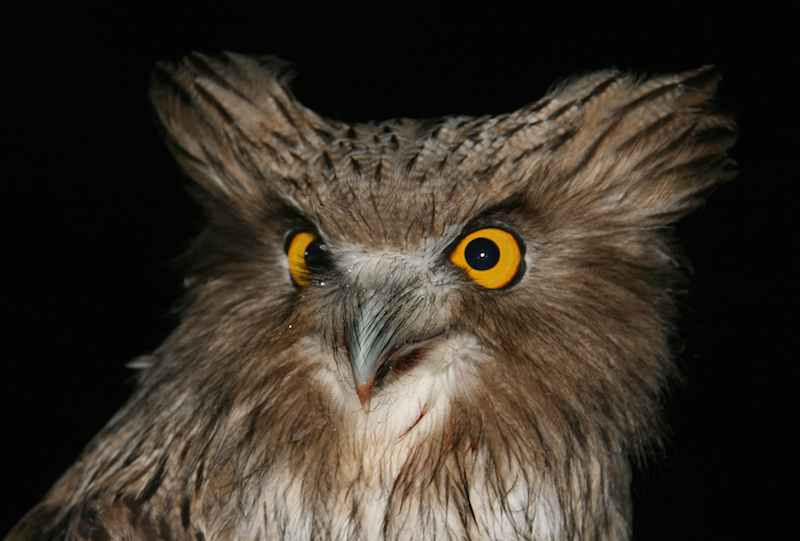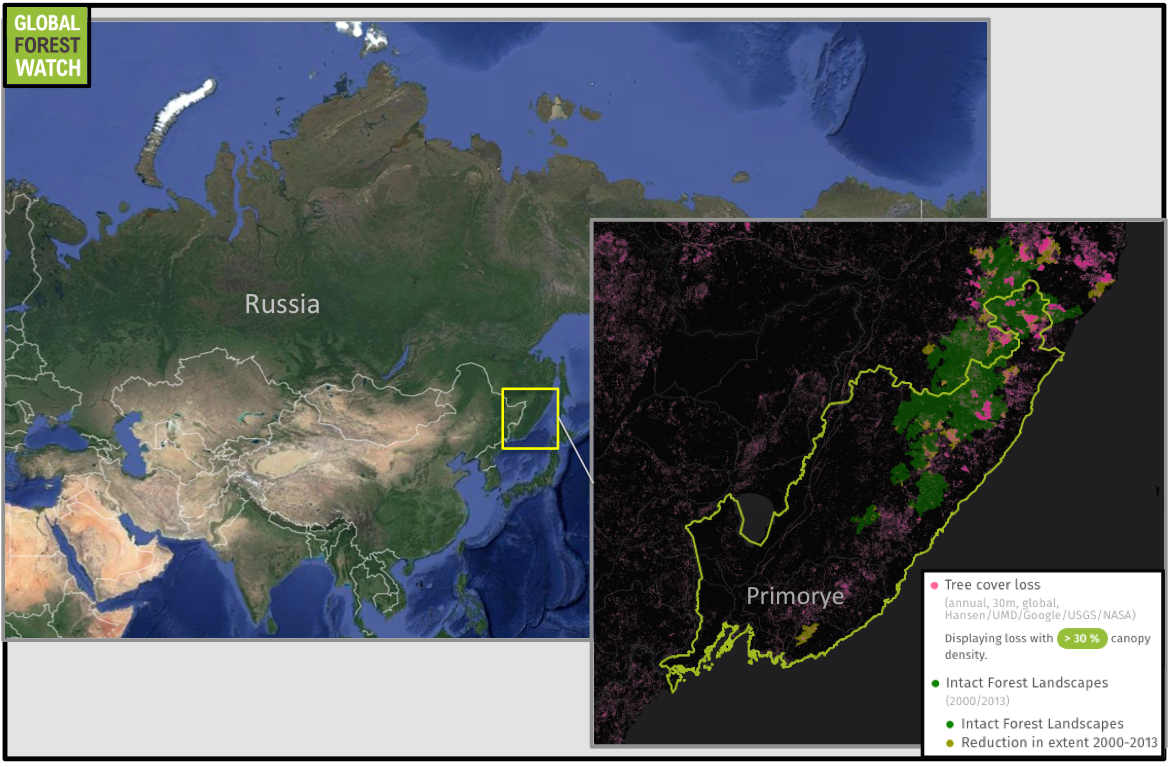- Mongabay interviewed Jonathan Slaght, a biologist with the Wildlife Conservation Society, who recently published an annotated translation of the observations of Russian military surveyor Vladimir Arsenyev.
- Arsenyev first started exploring the eastern province of Primorye shortly after the vast region became a Russian territory, documenting in great detail the animals and people that inhabited the area.
- Since that time, Primorye’s forests have been extensively logged and its wildlife hunted. But Russia has made some gains in terms of conservation, with tiger numbers rebounding after hunting nearly wiped them out by the 1940s.
- Slaght is currently working with logging companies to close logging roads and make Primorye’s forests less accessible for timber extraction and poaching.
If history teaches us anything, it’s that nothing stays the same.
A century ago, a Russian military surveyor, Vladimir Arsenyev, wrote about his treks through the wilds of Primorye. This coastal swath of forests and mountains in Far East Asia had only become Russian territory in 1860 and, when Arsenyev visited, was still largely inhabited by Chinese hunters, Korean farmers and nomadic indigenous groups, the Nanai and the Udege. Not only that: it was populated with tigers, leopards, bear, musk deer and the world’s biggest owl, the Blakiston’s fish owl. Through his writing, Arsenyev, much beloved in Russia today, captured a pre-Russian, pre-Soviet, pre-industrial snapshot of this wilderness. Now, one of Arsenyev’s most famous books, Across the Ussuri Kray, has been translated into English in full for the first time by Jonathan Slaght, a biologist with the Wildlife Conservation Society.
Slaght may be an unconventional choice to handle such a translation, but given his twenty years of working in the region with its wildlife – including with Blakiston’s fish owl and Amur tigers – Slaght has his own inimitable view of Primorye’s distinct biodiversity, unique culture and volatile history.

“[The book] is a snapshot of the cultural and natural landscape in a fascinating corner of the world a hundred years ago, right before indomitable human settlement changed it forever,” Slaght told Mongabay in an interview (printed in full below).
When Arsenyev first arrived in Primorye in 1902, he found forests not yet impacted by industrial-scale exploitation. Old-growth forests were the norm and most people in the region lived off what the forest provided, including hunting, fishing and small-scale farming. Today large, continuous tracts of primary forest called Intact Forest Landscapes (IFLs) are limited to the northern part of the province – and even those have shrunk considerably since 2000. The forest monitoring platform Global Forest Watch shows Primorye lost around 2 percent of its tree cover from 2001 through 2014 – nearly half of that from its IFLs. Wildfire and logging are big drivers of deforestation in the region.

“I think with time, everything is worse for wildlife, especially in an area like the province Primorye that had little human infrastructure a century ago and today has 2,000,000 residents and a dependence on the logging and fishing industries,” Slaght noted. “That said, Russia is the only tiger range state that has demonstrated significant tiger recoveries, and that all happened in the 20th century.”
Despite the expansion of industry into the region – and massive human population growth – Slaght said that Russia has done a “pretty good” job of preserving large areas of wilderness in the region, including a number of protected areas. What concerns him most today is the fact that most of Primorye is accessible due to logging roads reaching even into the deepest areas of the wilderness, allowing anyone – including poachers – easy access to areas once remote and largely human-free. At his day job, Slaght is working with local logging companies to close roads and provide an ongoing safe haven for the wonders that Arsenyev first documented a century ago.
Slaght’s translation includes hundreds of annotations, putting the adventure memoir into historical context, as well as rare photos and maps.
AN INTERVIEW WITH JONATHAN SLAGHT
THE BOOK
Mongabay: How would you pitch this book to a general reader in three sentences?

Jonathan Slaght: This is a natural history travel adventure; the story that partially inspired Akira Kurosawa’s Academy Award-winning film Dersu Uzala. It is a snapshot of the cultural and natural landscape in a fascinating corner of the world a hundred years ago, right before indomitable human settlement changed it forever. We are lucky that Arsenyev was there to document it.
Mongabay: Most of our readers have probably never heard of Vladimir Arsenyev. Can you tell us what made him so important to Russian conservation and history?
Jonathan Slaght: He was, at the start of his career anyway, a military cartographer who led expeditions across the Russian Far East to take stock of resources. He was also incredibly curious, and during his expeditions also documented things like the flora and fauna he encountered, and the customs of the Chinese and indigenous Udege he met. Thankfully, he had a gift as a writer and was able to covert his field notes into compelling literature; he authored dozens of publications that have inspired generations of Russians to appreciate nature and to “get out there” and explore. Just about any Russian who is involved in conservation in the Russian Far East today will tell you that Arsenyev was a huge influence on them.
Mongabay: Will you tell us about the character of Dersu Uzala? How is he integral to this story and what does he mean to Russians today?
Jonathan Slaght: Dersu was a Nanai hunter. The Nanai and the Udege are the two indigenous groups in the southern Russian Far East. Arsenyev used Dersu as a guide for several of his expeditions, and used him in his books as an archetypal native: the Dersu we read about was a composite of several guides Arsenyev used over the years. Arsenyev did this to create a record of the ways and customs of a people he knew were dying out, and through the character Dersu he showed how the indigenous populations of the region lived, and how they struggled to adapt their nomadic ways to Chinese and Russian rule.

CHANGE
Mongabay: You work in this region today as a scientist and a conservationist. How has Far Eastern Russia changed in the last hundred years?
Jonathan Slaght: The change has been massive. Form a cultural standpoint, a hundred years ago there were more Chinese and Koreans in the region than there were Russians, and now there are almost only Russians. From a natural history standpoint the change has also been substantial, with roads now providing access to almost every corner of the southern Russian Far East. In 1906 Arsenyev and his team spend six months walking 1,000 kilometers; I can practically trace that same path now on motorways in a little more than a day.
Mongabay: Is life better or worse for wildlife than when Arsenyev traveled through the region? What new pressures are species facing? Have any old pressures vanished?
Jonathan Slaght: I think with time, everything is worse for wildlife, especially in an area like the province Primorye that had little human infrastructure a century ago and today has 2,000,000 residents and a dependence on the logging and fishing industries. That said, Russia is the only tiger range state that has demonstrated significant tiger recoveries, and that all happened in the 20th century. After a biologist estimated only 20-30 tigers left in the wild in the 1940s, the Russian government issued a moratorium on tiger sport hunting and live capture for zoo and circus markets. These were both tremendous pressures on tigers that, once eliminated, helped the population recover.

Mongabay: What has happened to the indigenous groups that Dersu Uzala belonged to? How have their lives changed?
Jonathan Slaght: The Udege are found primarily in two river drainages now, the Bikin and the Samarga, in the north of the province Primorye, with a total population of less than 1,500 people. Historically they lived in nomadic camps, but were forced to abandon this lifestyle in the 1940s. Many Udege continue the tradition of subsistence hunting and fishing. The Nanai, to which Dersu belonged, are doing a little better. There are about 12,000 in Russia and an additional 5,000 in northeast China.

CONSERVATION
Mongabay: How successful has Russia been at preserving a portion of the wilderness Arsenyev found?
Jonathan Slaght: Pretty good, actually. Russia has a fantastic history of protecting natural landscapes. Part of Arsenyev’s route in 1906 took him through what is now the Sikhote-Alin Biosphere Reserve (established in 1935), and this summer the reserve created a new hiking trail that followed this route.
Mongabay: What are the major threats in the region? Anything on the horizon that concerns you?
Jonathan Slaght: I’m very uncomfortable with the existing and potential threats of forest roads (namely logging roads) in the region. About 80% of tiger habitat in Russia is unprotected, yet most conservation focus is on protected areas. Tigers can’t survive if only 20% of their habitat is protected.
In Ternei County of Primorye, where most of my fieldwork takes place, the roads network expanded from about 200 kilometers of road thirty years ago to more than 6,000 kilometers of road today. This unprecedented access to anyone with a car is a huge threat to wildlife and the landscape. A single, carelessly-discarded cigarette butt could start a fire that destroys an entire forest.
Mongabay: What gives you hope for conservation in Far Eastern Russia?
Jonathan Slaght: The past few years I’ve focused on creating dialogue with a local logging company that holds harvest rights on about 10% of tiger habitat in Russia. We’ve found common ground: they want to see a reduction in illegal logging, and we want to see a reduction in poaching and human disturbance. So, we’ve agreed to start collaborating on road closures –blocking vehicular access to portions of the logging road network that are no longer needed. Working with the logging industry to meet common goals is an enormously important step for conservation in the southern Russian Far East.

Top image is of an Amur (also called Siberian) tiger caught on camera trap. Credit: Sikhote-Alin Reserve/WCS Russia
